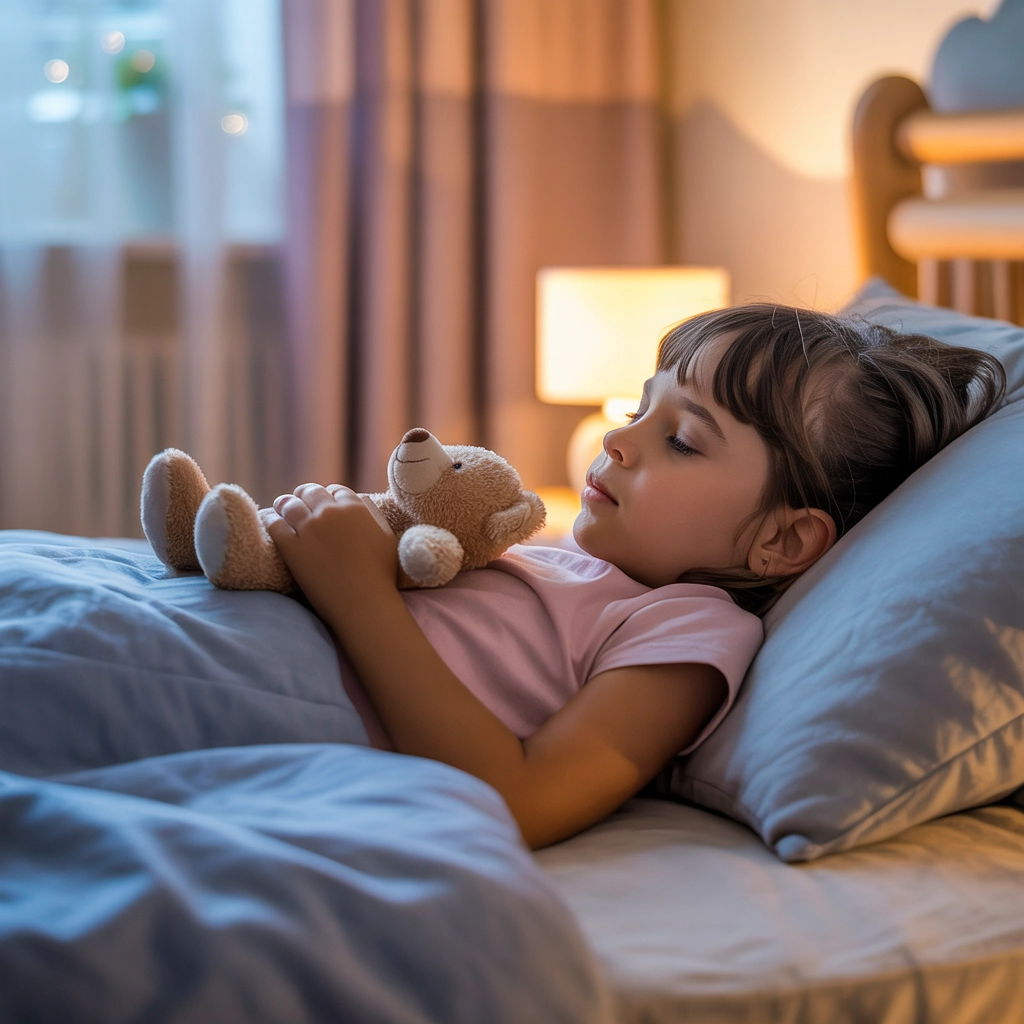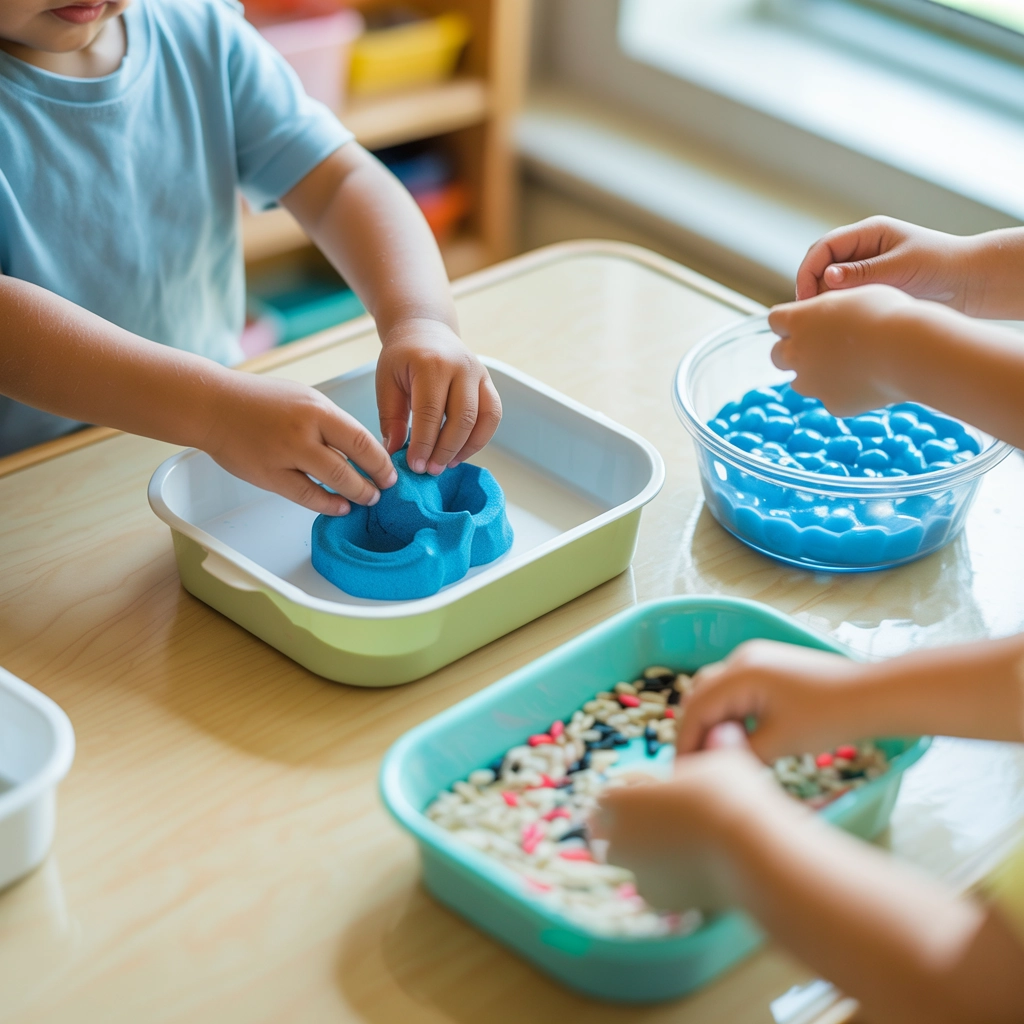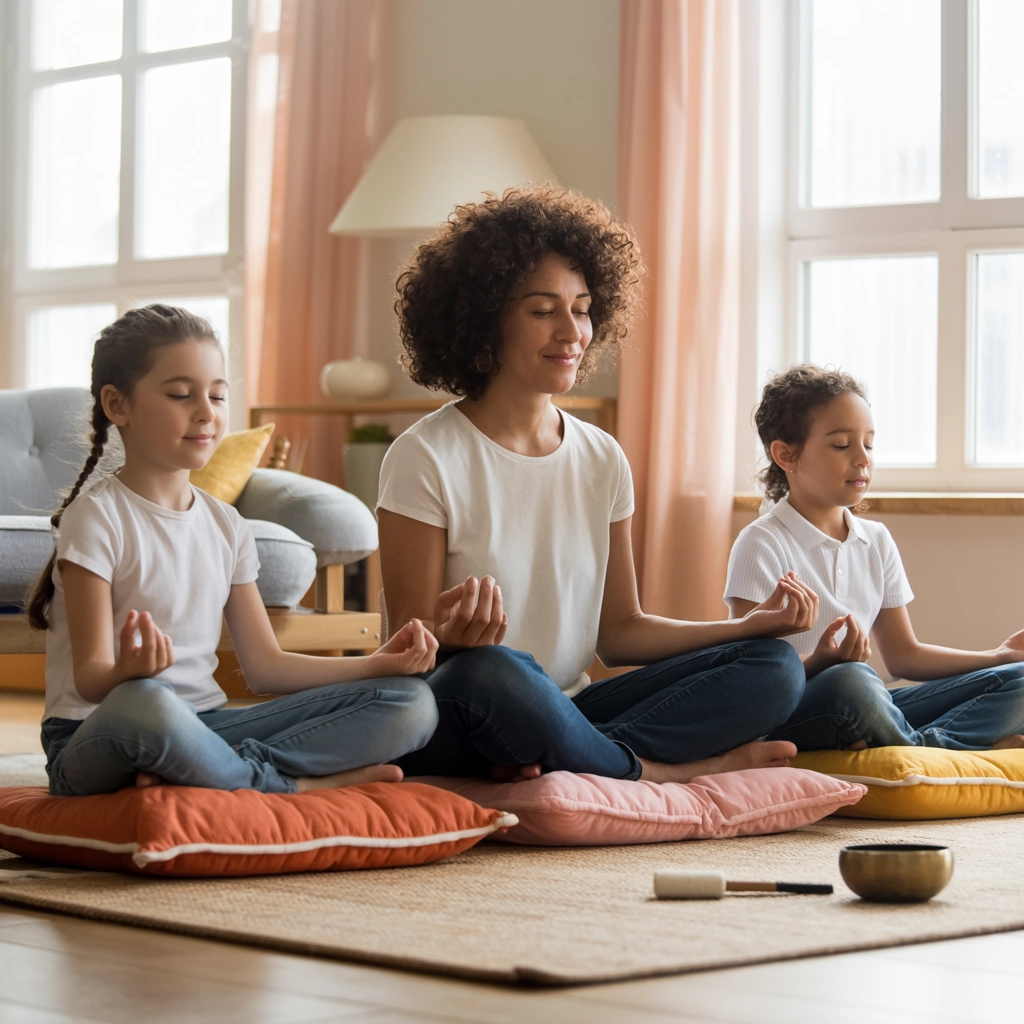Real Stories, Real Transformation
Emma's Story: From Bedtime Battles to Peaceful Nights
Emma, a mother of two from Leeds, describes bedtime as "the most dreaded hour of the day" for nearly three years.
"My daughter Lily would get so worked up at bedtime—refusing to stay in bed, crying, coming up with endless excuses. I'd get increasingly frustrated, and we'd both end up in tears many nights. I was exhausted and at my wit's end."
After learning about mindfulness techniques from her health visitor, Emma introduced a simple breathing routine before bedtime.
"We call it 'teddy breathing'—Lily places her favourite teddy on her tummy while lying down, and watches it rise and fall with each breath. It sounds so simple, but it's been revolutionary. She finds it calming, and it gives her something to focus on besides her racing thoughts. Within two weeks, our hour-long bedtime battles became 15 minutes of peaceful connection."

Mark's Classroom Transformation
Mark teaches Year 2 at a primary school in Birmingham. After a particularly challenging year with a class displaying high anxiety levels, he introduced daily mindfulness practices.
"I was sceptical at first," Mark admits. "I worried it would be another thing to fit into an already packed day. But I started with just three minutes after lunch when the children were typically at their most unsettled."
The class began with a simple 'finger breathing' exercise—tracing the outline of their hand with the index finger of the opposite hand, breathing in while tracing up a finger, and out while tracing down.
"The change was gradual but unmistakable. Within a month, the post-lunch chaos had reduced significantly. Children who previously struggled to transition between activities were now able to centre themselves. Most surprisingly, they started requesting these practices when they felt overwhelmed."
Mark noted that academic performance improved as well. "When children aren't in fight-or-flight mode, they can actually absorb and process information better. Their concentration improved, and several parents commented on positive changes at home too."
Aisha's Experience with Her Non-Verbal Son
Perhaps one of the most moving stories comes from Aisha, whose son Rayyan has autism and limited verbal communication.
"Managing big emotions was extraordinarily difficult for Rayyan. Without the words to express his frustration, he'd have meltdowns that could last for hours. It was heartbreaking for both of us." Someone recommended simple sensory mindfulness activities. One that proved particularly effective was the 'calm hands' technique—running hands through different sensory materials like rice, sand, or water while focusing on the sensation.
"It gave him a way to ground himself when everything felt too much. The tactile sensation combined with focused attention helped him regulate his emotions in a way nothing else had. Now when he feels overwhelmed, he'll actually go to his sensory box himself. The duration and intensity of his meltdowns have decreased dramatically."
The Techniques That Made the Difference
Across these stories, several key mindfulness techniques emerge as particularly effective with children:
Breathing Visualisations
Children respond well to concrete visualisations that make abstract concepts tangible:
- Balloon Breathing: Imagining inflating a balloon in their belly with each inhale
- Finger Breathing: Tracing fingers while coordinating breath
- Teddy Breathing: Placing a stuffed toy on their tummy to watch it rise and fall
Sensory Grounding
Engaging the senses helps children anchor themselves in the present moment:
- Five Senses Check-In: Noticing five things they can see, four they can touch, three they can hear, two they can smell, and one they can taste
- Sensory Materials: Using sand, water, rice, or play dough mindfully
- Weather Report: Describing how they feel inside using weather terms (stormy, sunny, foggy)

Mindful Movement
For children who struggle with sitting still, movement-based mindfulness can be transformative:
- Yoga Poses: Simple animal poses with breath coordination
- Freeze Dance: Dancing to music and freezing in position when it stops, noticing body sensations
- Mindful Walking: Taking slow, deliberate steps while noticing how feet feel against the ground
The Science Behind the Serenity
These aren't just nice stories—they're backed by neuroscience. Dr. Lisa Greenwald, a child psychologist specialising in mindfulness interventions, explains:
"When children practice mindfulness, they're actually developing their prefrontal cortex—the part of the brain responsible for executive function, including emotional regulation. They're creating neural pathways that help them respond rather than react."
Research shows that regular mindfulness practice in children can lead to:
- Improved attention and focus
- Better emotional regulation
- Reduced anxiety and stress
- Enhanced immune function
- Improved sleep quality
- Better social skills and empathy
Starting Your Own Mindfulness Journey
These transformations didn't happen overnight. Each parent and practitioner emphasises that consistency was key.
"It's not about perfect practice," Emma notes. "It's about making it a natural part of your routine. We started with just two minutes a day, but we did it every day."
Mark adds, "Finding moments to incorporate mindfulness naturally worked better than forcing a formal 'mindfulness time'. We practice when transitioning between activities, before tests, or when tensions rise."

Practical Tips from Parents and Practitioners
Those who've successfully implemented mindfulness with children offer these suggestions:
- Start simple and short: Begin with 1-2 minute practices and gradually extend
- Practice yourself: Children learn by watching—demonstrate mindfulness in your own life
- Make it playful: Mindfulness should feel enjoyable, not like another chore
- Use visual aids: Calm jars, breathing buddies, and picture books help make concepts concrete
- Be patient: Some days will go better than others—consistency matters more than perfection
- Validate emotions: Mindfulness isn't about suppressing feelings but acknowledging them
- Celebrate small wins: Notice and acknowledge improvements, however modest
The Ripple Effect
What's particularly striking about these stories is how the benefits extend beyond the specific challenges that prompted the mindfulness journey.
"We started using mindfulness techniques to help with Lily's bedtime," Emma reflects, "but now I notice she uses them in all sorts of situations—before ballet performances, when she's frustrated with homework, even when her little brother is annoying her."
Mark has observed similar effects: "Children who learned these techniques to manage classroom transitions are now using them before football matches and music recitals. One parent told me her daughter led the whole family in a breathing exercise when they were stuck in holiday traffic!"
Becoming a Mindfulness Guide for Children
For parents and practitioners inspired by these stories, the journey to implementing mindfulness with children can begin with small, consistent steps. Many find that having proper guidance accelerates the journey and helps avoid common pitfalls.
Aisha offers this advice: "Find proper training if you can. I tried using online videos at first, but having a knowledgeable instructor who understood child development made all the difference in adapting techniques for Rayyan's specific needs."
To support this growing need, our Mindfulness for Children Instructor course launches this September, offering comprehensive, evidence-based training for parents and practitioners who want to guide children toward emotional regulation and resilience through mindfulness.
The stories shared here represent just a glimpse of what's possible when mindfulness becomes part of children's daily lives. As Sarah, the nursery practitioner, reflects: "The transformation isn't just in the children—it's in the adults too. I'm calmer, more patient, more present. We're all learning together."
From stressed to serene isn't a destination—it's an ongoing journey of growth, connection, and discovery. And it's a journey well worth taking.
Interested in guiding children toward emotional wellbeing through mindfulness? Our Mindfulness for Children Instructor course launches this September.
Learn more about this transformative opportunity get in touch today


